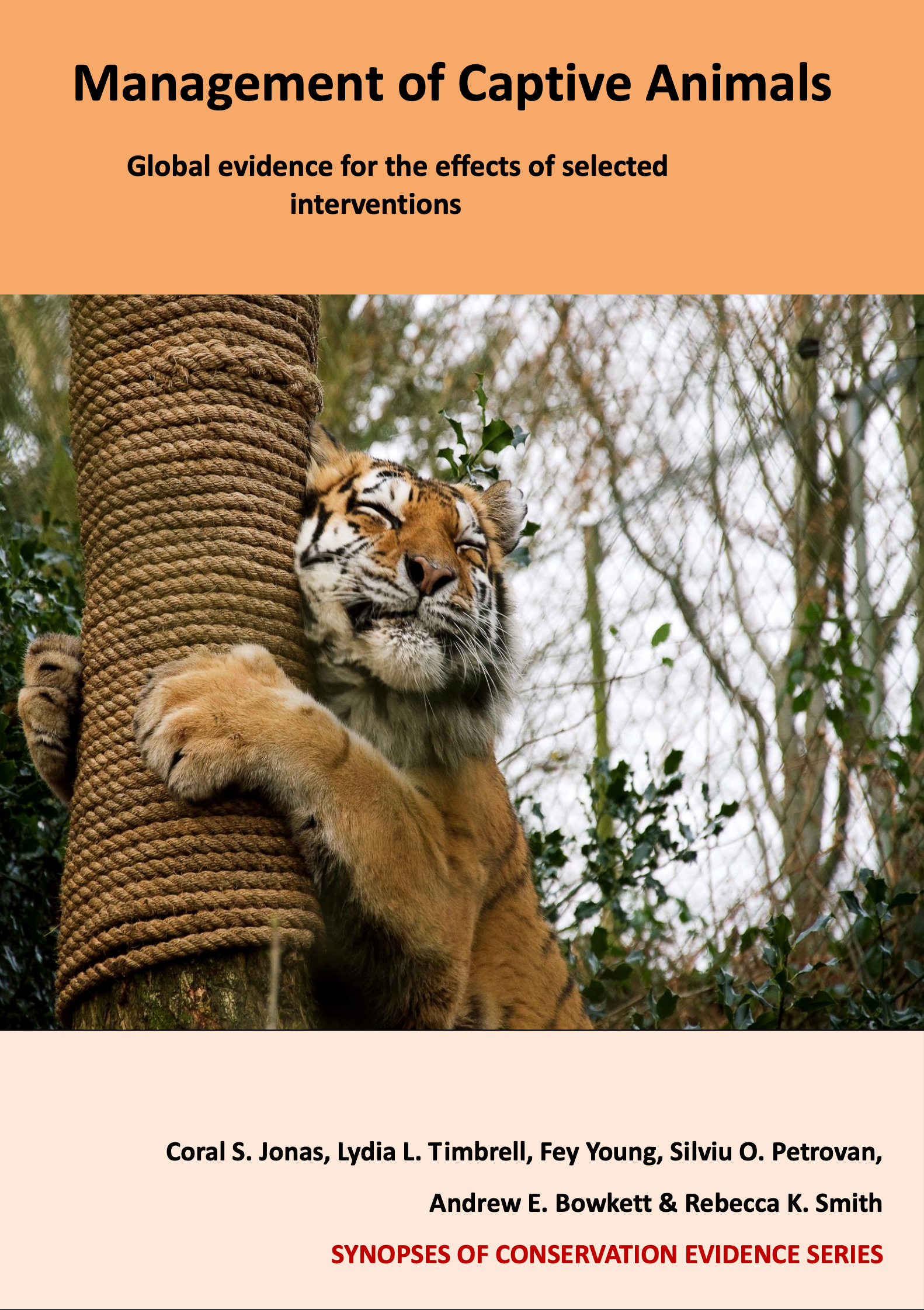Primates: Maximise both horizontal and vertical food presentation locations
-
Overall effectiveness category Likely to be beneficial
-
Number of studies: 2
View assessment score
Hide assessment score
How is the evidence assessed?
-
Effectiveness
65% -
Certainty
50% -
Harms
0%
Study locations
Supporting evidence from individual studies
A controlled study in 1994 in the UK and Madagascar (Britt 1998) found that black and white ruffed lemurs Varecia variegate variegata fed for less time on provisioned food indoors and more time on natural vegetation in their outdoor island exhibit than when caged. The percentage of time spent feeding reduced from 89% when caged to 61% on the island, but 39% of the time was spent feeding on natural vegetation rather than provisioned food on the island. The variety of locations also encouraged them to exhibit similar use of feeding postures (96% of feeding time) and support postures (20% of ground feeding) to that observed in wild lemurs (75% and 25% respectively). On the island, chopped food was suspended from trees; in the cage, it was placed on a mesh roof rather than on shelves. Four captive lemurs, were observed in a cage environment from March to June and on an island from June to September over 24 days (192 hours of observation). As a comparison, observations of a wild population were collected for a focal group of five lemurs every two minutes for 600 hours, to record individual behaviour and posture. (CJ)
Study and other actions testedA replicated, before-and-after study in 2002 in Scotland, UK (Buchanan-Smith et al. 2002) reported that the amount of time spent feeding in bowls positioned at the top of the enclosure was longer than in bowls positioned on the floor in common marmosets Callithrix jacchus, although no statistical tests were carried out. The marmosets spent more time stationed in the top half of the enclosure than in the bottom half (overall 79% vs 21%) with 59g of food eaten at the top bowl compared to 19g from the bottom bowl. Eight marmosets were housed in pairs in four cages. During the experiment, bowls were placed at different heights, either: on the floor, at the top; or on the floor and at the top. Each pair was observed for 15 minutes per day over nine days for each condition after the food bowls had been presented. (CJ)
Study and other actions tested
Where has this evidence come from?
List of journals searched by synopsis
All the journals searched for all synopses
This Action forms part of the Action Synopsis:
Management of Captive Animals
Management of Captive Animals - Published 2018
Captive Animal Synopsis





)_2023.JPG)














